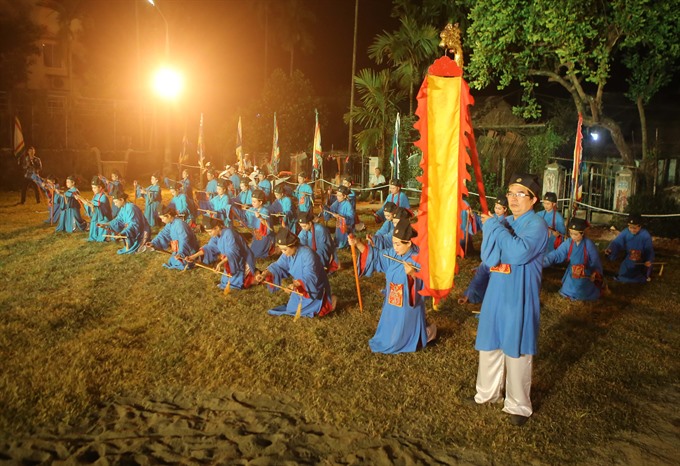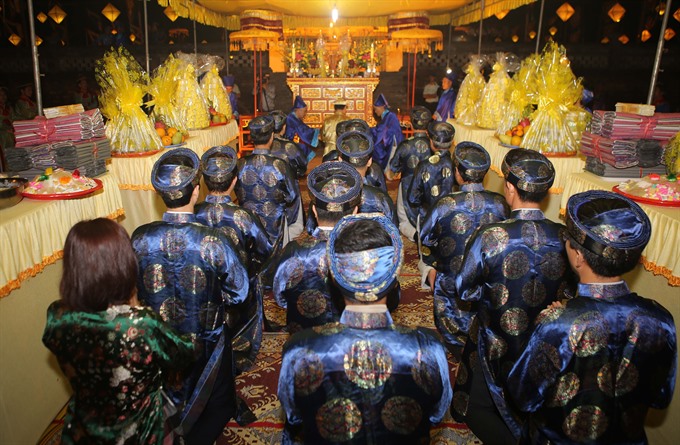 Life & Style
Life & Style

Authorities in central Thừa Thiên- Huế Province conducted a ritual ceremony at a platform worshipping the gods of land and rice early yesterday morning.
 |
| Acting mandarins took part in a ritual ceremony held in the dark at a platform built by the Nguyễn Dynasty (1802-1945) to worship the gods of land and rice in Huế yesterday. VNS Photo Hồ Cầu |
THỪA THIÊN- HUẾ — Authorities in central Thừa Thiên- Huế Province conducted a ritual ceremony at a platform worshipping the gods of land and rice early Tuesday morning.
The ceremony commenced in the dark after midnight, resembling the royal practices of kings and mandarins under the country’s last monarchy, the Nguyễn Dynasty (1802-1945).
Huế Monuments Conservation Centre, a local government body managing the dynasty’s relics, said the ceremony at the platform was intended to remind young generations of traditions as well as to maintain the intangible cultural values contained in the ceremony.
Ritual decoration items, food and the ceremony process remained the same as they were during the imperial era. But yesterday’s ceremony was chaired by the provincial officials, who were dressed in formal male áo dài, the traditional national costume.
The platform is located 2km west of the former Imperial Palace. After founding the dynasty in 1802, the dynasty’s first king Gia Long built the platform from a mud made using dozens of soil types brought to Huế from different parts of the country, so that the structure represents the whole country. (When it was repaired in 2008, the platform was given a sturdy concrete foundation.)
The dynasty kings performed grand ritual ceremonies twice a year at the platform, once in spring and once in autumn, praying for good weather and bumper crops. The platform ceremony ranked third among the dynasty’s most important ceremonies.
The centre held a grand re-enacting ceremony after the platform was repaired, with a procession of actors portraying a king, mandarins and royal soldiers and real elephants and horses.
Since then, they have organised the ceremony annually on a smaller scale during the second lunar month. Last year, a handful of soil taken from the Trường Sa (Spratly) Islands was added to the platform to highlight Việt Nam’s sovereignty over the archipelagoes.
The idea of adding soil taken from Trường Sa was attributed to Huế’s late researcher Hồ Tấn Phan. — VNS
 |
| Officials kowtowed during the ceremony held in the dark at a platform built by the Nguyễn Dynasty (1802-1945) to worship the gods of land and rice in Huế yesterday. VNS Photo Hồ Cầu |
56944834PM.jpg) |
| Provincial officials of central Thừa Thiên-Huế Province conducted rituals at a platform built for worshiping the gods of land and rice by the Nguyễn Dynasty (1802-1945) in Huế yesterday. VNS Photo Hồ Cầu |




